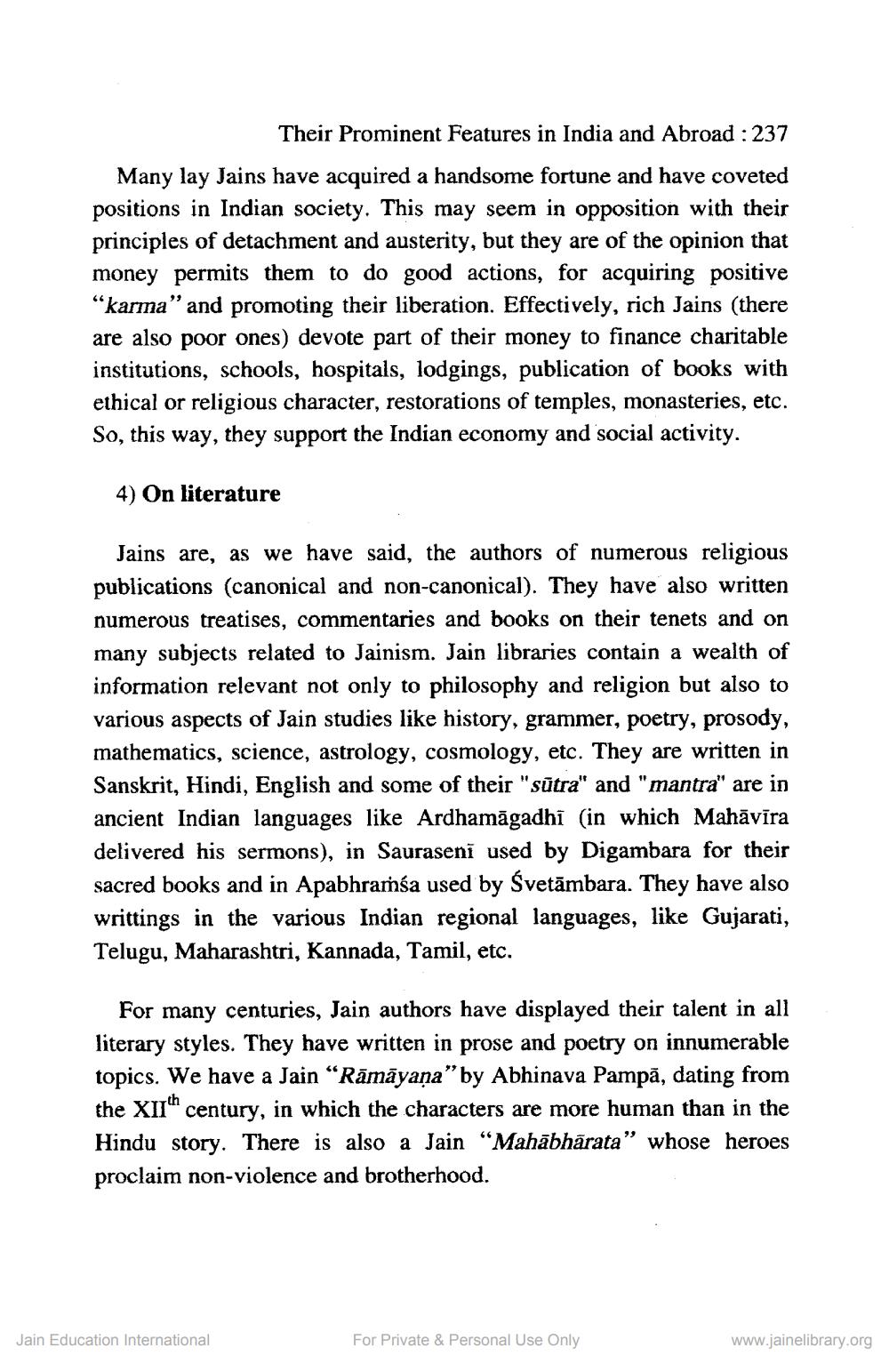________________
Their Prominent Features in India and Abroad : 237
Many lay Jains have acquired a handsome fortune and have coveted positions in Indian society. This may seem in opposition with their principles of detachment and austerity, but they are of the opinion that money permits them to do good actions, for acquiring positive "karma" and promoting their liberation. Effectively, rich Jains (there are also poor ones) devote part of their money to finance charitable institutions, schools, hospitals, lodgings, publication of books with ethical or religious character, restorations of temples, monasteries, etc. So, this way, they support the Indian economy and social activity.
4) On literature
Jains are, as we have said, the authors of numerous religious publications (canonical and non-canonical). They have also written numerous treatises, commentaries and books on their tenets and on many subjects related to Jainism. Jain libraries contain a wealth of information relevant not only to philosophy and religion but also to various aspects of Jain studies like history, grammer, poetry, prosody, mathematics, science, astrology, cosmology, etc. They are written in Sanskrit, Hindi, English and some of their "sutra" and "mantra" are in ancient Indian languages like Ardhamāgadhi (in which Mahāvīra delivered his sermons), in Sauraseni used by Digambara for their sacred books and in Apabhramsa used by Svetambara. They have also writtings in the various Indian regional languages, like Gujarati, Telugu, Maharashtri, Kannada, Tamil, etc.
For many centuries, Jain authors have displayed their talent in all literary styles. They have written in prose and poetry on innumerable topics. We have a Jain "Rāmāyaṇa" by Abhinava Pampa, dating from the XIIth century, in which the characters are more human than in the Hindu story. There is also a Jain "Mahabharata" whose heroes proclaim non-violence and brotherhood.
Jain Education International
For Private & Personal Use Only
www.jainelibrary.org




